Interplay Between Light and Shadow
The Life and Works of Louis Vierne
In 2020, we celebrate the 150th anniversary of the birth of the composer and organist Louis Vierne whose life was not only marked by artistic success but also by health problems and personal misfortune. Above all, his impaired sight from birth would prove to be a heavy burden throughout his life which he countered through his active career as an organist and composer. Works for the organ predominate in his extensive oeuvre, but also his vocal works are of great appeal.
Louis Vierne was born almost blind; this perhaps heightened his sensitivity towards musical impressions. According to his own memory, he experienced his first deeply emotional encounter with the sound of the church organ at the tender age of six. He received tuition in piano and organ at the Institut National des Jeunes Aveugles (National Institute for Young Blind People) in Paris and an operation helped to improve his sight.
He was deeply impressed by César Franck’s skills on the organ and became his pupil at the Paris Conservatoire. Unfortunately, the tuition with the fatherly friend and patron came to an abrupt end after four weeks when Franck died following a road accident. His successor Charles-Marie Widor subsequently appointed Vierne as his assistant in his post in Saint-Sulpice in Paris with the great Cavaillé-Coll organ in 1892. The organ was one of the largest of its time and proved to be a great source of inspiration for Vierne. When Widor gave up his organ class to be appointed as professor of composition in 1896, Vierne was passed over as his successor to his great chagrin. He was however fortunate to be selected by a prominent jury as the organist of Notre-Dame Cathedral in 1900.
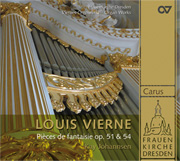
Louis Vierne: Pièces de fantaisie op. 51 + 54
Samuel Kummer
CD Carus 83.250
In this film Louis Vierne is performing J. S. Bach’s In Dir Ist Freude (In Thee is Joy, BWV 615) on the Grandes Orgues of Notre Dame de Paris. Part of a 1934 newsreel (YouTube).
After a number of contented years, Vierne endured much misfortune over the following decades which took a great toll on his health: in 1906, a broken leg with complications forced him to give up playing the organ for six months and completely relearn his pedal technique. His marriage to the singer Arlette Taskin in 1899 ended in divorce in 1909. What is more, his eyesight became further impaired by glaucoma and he was forced to seek treatment in Switzerland in 1916. He endured the painful loss of his son during World War I; and his beloved organ in Notre-Dame also suffered extensive damage during the war. Vierne collected funds for its renovation on concert tours through Europe, Canada and the USA during the 1920s. Although he was much celebrated as a composer and organist on these tours on which he was accompanied by the singer Madeleine Richepin, he generally found travelling a great strain.
The final years of Vierne’s life were burdened by his decreasing eyesight, other physical infirmities and depression. During an organ recital in Notre-Dame on 2 June 1937, he suffered a stroke and died immediately. The funeral service was held only a few days later in the same location – the organ was swathed in black and remained silent.
Organ symphonies, vocal music and chamber music
Vierne‘s six organ symphonies representing the summit of this genre’s glorious French tradition are without doubt the most significant works in the composer’s output for organ. Vierne’s compositional role models – chiefly Franck and Widor – are clearly audible in these compositions which also contain hints of Mendelssohn and Schumann. Alongside beautiful melodic invention in the slow movements and the occasionally startling and bizarre ideas in the Scherzos and Intermezzos, it is primarily chromaticism which characterizes Vierne’s style. All six symphonies are in minor keys and the later compositions are characterized by a dark and gloomy atmosphere. Vierne did have plans for a seventh symphony in C major, but the work was never written.
Liturgical vocal music plays only a small role in Vierne’s oeuvre. The Messe solennelle was composed in 1899 during a comparatively positive phase of his life and can be counted among the highlights of Late Romantic organ masses. His only other works for choir are the very early composed works Tantum ergo op. 2 and Ave Maria op. 3 (1886) as well as the much later Cantique à Saint Louis de Gonzague (1926), and for solo voice the Ave verum op. 15 (1899), and Les Angélus op. 57 (1929) published in Carus 4.109; the latter work is also available in a choral transcription by Clytus Gottwald (Carus 9.144).
Louis Vierne: Symphonies No. 3 and 5
Samuel Kummer
CD Carus 83.405
CD of the Choral Collection French Choral Music
Kammerchor figure humaine, Denis Rouger
Carus 2.311
Alongside organ works and church music, Vierne’s compositional output also includes numerous works of different genres. He composed the symphonic legend Praxinoé op. 22 for soloists, choir and orchestra in 1906, the symphonic poem Psyché on a text by Victor Hugo op. 33 in 1914 and a whole series of other works for orchestra and chamber music ensembles.
The dedications in many of his compositions reflect the events of Vierne’s life: the Piano Quintet op. 42 (1917/18) was composed in memory of his son Jacques who died in World War I; four piano pieces entitled Solitude op. 44 were dedicated to his brother René, another victim of the war. A number of works including the five Songs on Texts by Charles Baudelaire op. 45 (1924) were dedicated to his friend and companion Madeleine Richepin. Finally, each movement of the Messe basse pour les défunts (Low Mass for the Dead) op. 62 for organ (1934, available in: Carus 18.163) is written in memory of a deceased friend who was either blind or a helper of the blind. As Vierne had almost completely lost his remaining sight by the time of its composition, he notated the work in Braille and subsequently dictated it to Madeleine Richepin. This would be his final composition.
The Carus Critical Edition
The Critical Edition of the compositions of Vierne published by Carus containing all organ works, the Messe solennelle and the smaller-scale choral compositions provides a meticulously exact and authentic musical text. Obvious printing errors in the first edition have been corrected, doubtful passages are commented on and alternative solutions offered. As all Vierne’s organ works and liturgical compositions were published during the composer’s lifetime, the printed editions from a variety of French publishing houses served as the principle sources for this edition, although it is not clear whether Vierne himself was able to participate in the proofreading of his musical texts due to his poor eyesight.
My colleague David Sanger (†) and I were able to peruse his manuscripts in libraries and private collections and gained further insight. While the early manuscripts are relatively easy to read (Vierne wrote in large notation on large manuscript paper), the manuscript of the 6ème Symphonie for example is at times hard to decipher. Our editorial work was made easier by the fact that Vierne rarely made subsequent alterations to finished manuscripts – in contrast to Widor and other composers.
The Carus Complete Edition also contains organ works not notated by Vierne; at the end of the 1920s, he recorded three improvisations in Notre-Dame for Odéon: Cortège, Marche épiscopale and Méditation. Although the three improvisations were transcribed and published by Maurice Duruflé, he deviated in several passages and altered the sequence of the three improvisations in comparison with the recorded version. Volume 13 of the Carus Complete Organ Works (Carus 18.163) contains a version compiled by David Sanger which adheres directly to Vierne’s performance.
Recording of Louis Vierne’s improvisation Cortège on 17th November 1928 at Notre Dame in Paris (YouTube). Provided by the International Historical Organ Recording Collection.



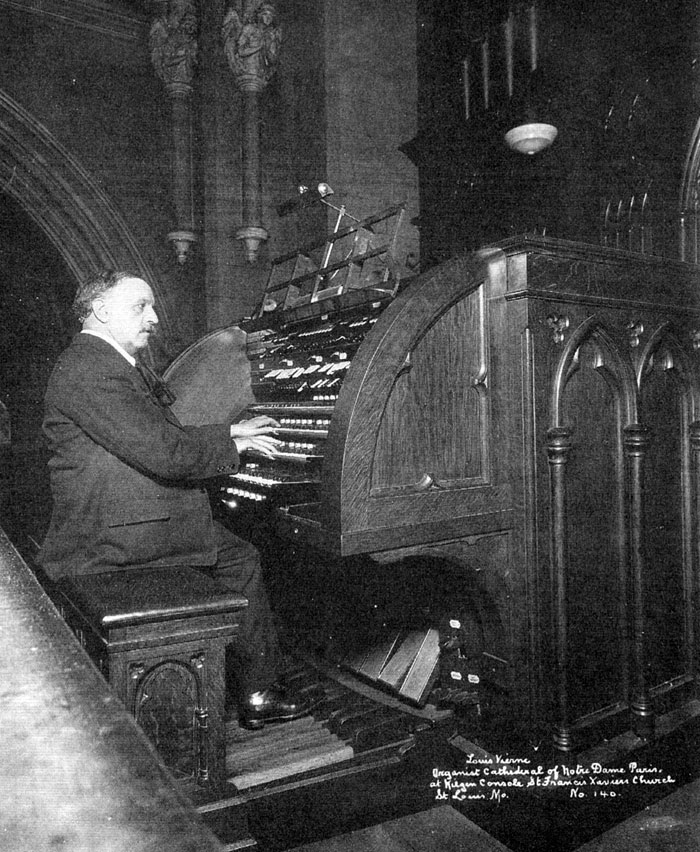
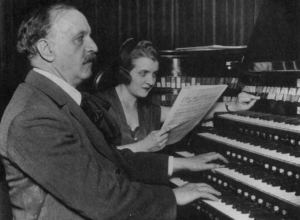
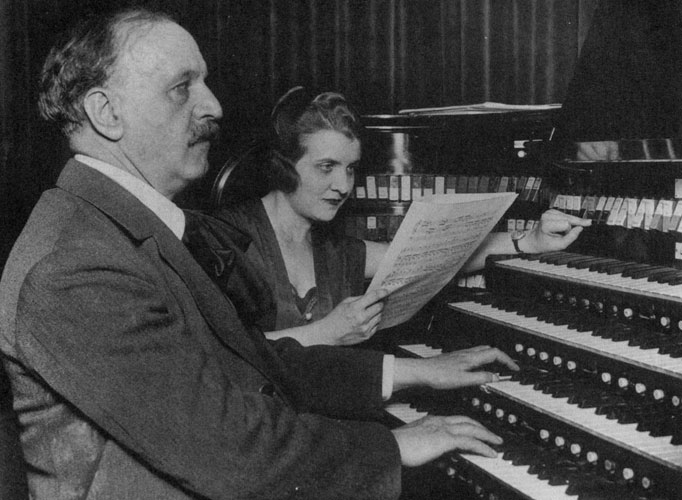
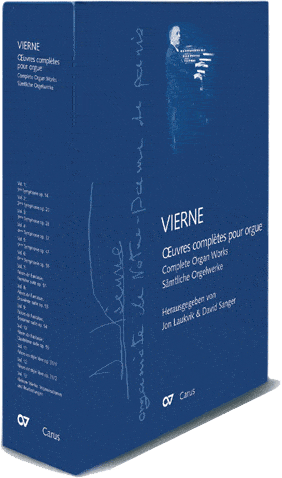
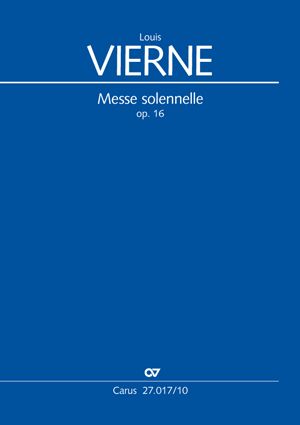
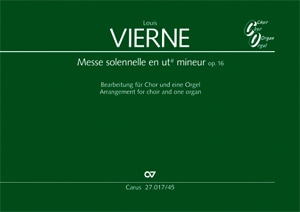


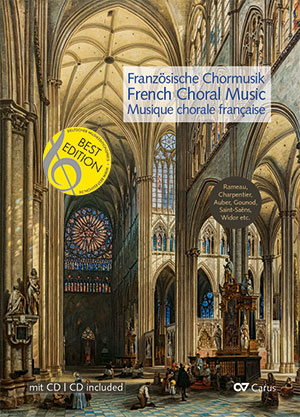

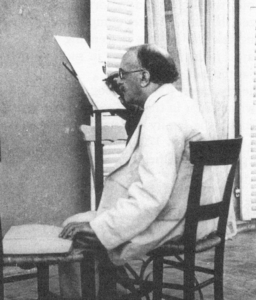
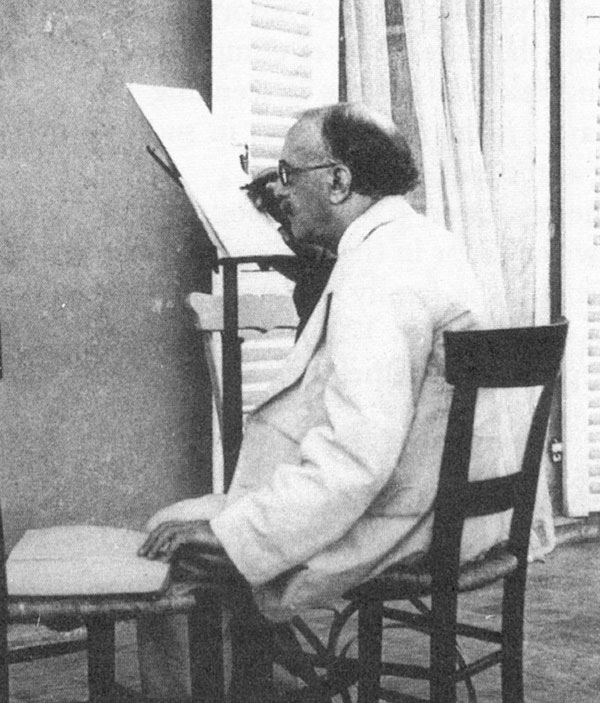


Leave a Reply
Want to join the discussion?Feel free to contribute!